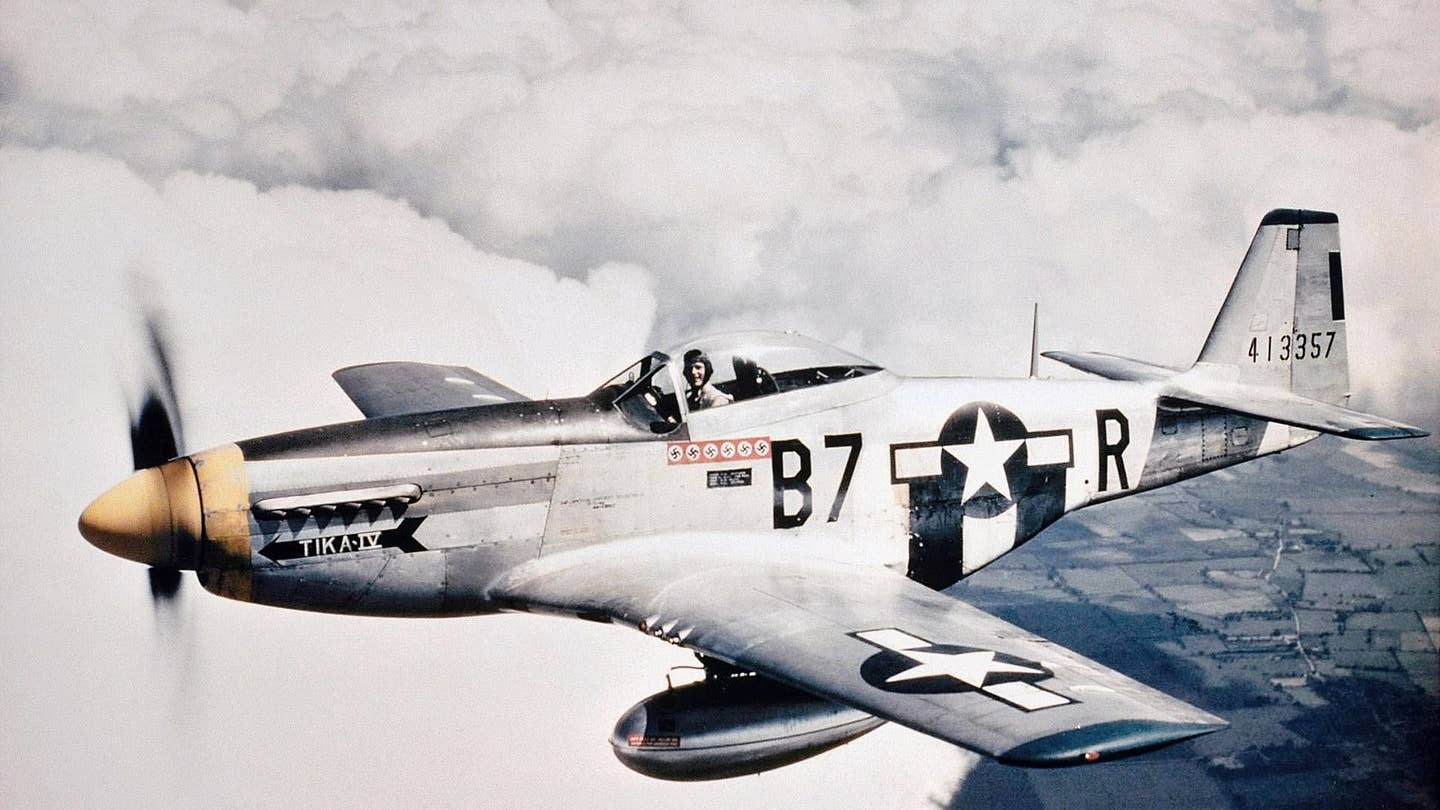How the P-51’s paper mache drop tanks changed WWII

A P-51 Mustang with drop tanks.
SUMMARY
By December 1944, the momentum of World War II was clearly in the Allies' favor. The new front in Europe, opened on D-Day, was costly. But Germany was losing on all three fronts. Still, it reportedly took the appearance of P-51s with paper mache drop tanks to drive home the point to German leaders.
Italy was essentially lost, with German troops holding a small sliver of the northernmost territory. Russia was roaring back across the oil fields of eastern Europe, cutting Germany off from vital fuel sources. And American, Canadian and British forces were pushing for the German border.
But Hitler and the Third Reich refused to accept the reality. Germany built up massive forces for Operation Watch on the Rhine, the counteroffensive that would be the Battle of the Bulge. Hitler still played with his maps and predicted Germany victory.
And even other senior German leaders seemed to believe it. The head of the Luftwaffe, Hermann Göring, reportedly accepted reality at one key moment: the first time he saw a P-51 Mustang over Berlin.
The importance of P-51s

The importance of fighter cover for strategic bombing runs is hard to overstate. In pre-World War II political wrangling, Boeing managed to convince the Army Air Corps that B-17s didn't need a fighter escort. This made B-17s seem cheaper to operate compared to even two-engined bombers, and none other than Col. Curtis LeMay led the creation of B-17 formations where each bomber would protect the rest.
The problem? Downing fighters from a B-17 was actually pretty hard, requiring discipline and precise aiming in an environment so cold that taking a glove off could result in frostbite and amputation. Bombing runs over Europe without an escort lost 20 percent of their formation.
When the Army Air Corps added fighters back into the mix, combat losses of bombers plummeted. But the fighters lacked the range of the B-17 and other, new heavy bombers coming online from the U.S. and Britain. Bombers would enjoy fighter escorts into German-held territory, but the Luftwaffe would just wait to strike until the Allied fighters ran low on fuel and had to leave. Then they'd pounce.
The P-51D, with a combat range of 750 miles, could just barely make it from London to Berlin, but it rarely did because that wouldn't leave it enough fuel for effective fighting. While drop tanks would fix this, making them from metal seemed too wasteful. Bombers knew that they were at risk on long missions. They sometimes lost a third of their number on a single outing.
Paper droptanks stockpiled for use by the 359th Fighter Group, RAF East Wretham, 1944.
Paper mache drop tanks and Mustangs over Berlin
Enter the P-51's paper mache drop tank. This little innovation was lighter, cheaper, and more disposable than its metal counterpart. While it wouldn't work nearly as well as a bomb, it worked fantastically as an auxiliary tank. All of a sudden, P-51Ds could fly more than 600 miles on their drop tanks, drop them as soon as the Luftwaffe arrived, and then have more than enough fuel to fight for minutes or hours and make it all the way back to England.
P-47 Thunderbolts and P-38 Lightnings got the same drop tank treatment. For bombers, Berlin was now a breeze.
And so the Mustang became ubiquitous over Berlin, accompanying bombers often as they attacked. Soon, loss of German factories to bombers and German fighters to bomber escorts gave the Allies air superiority and then dominance.
SHARE
